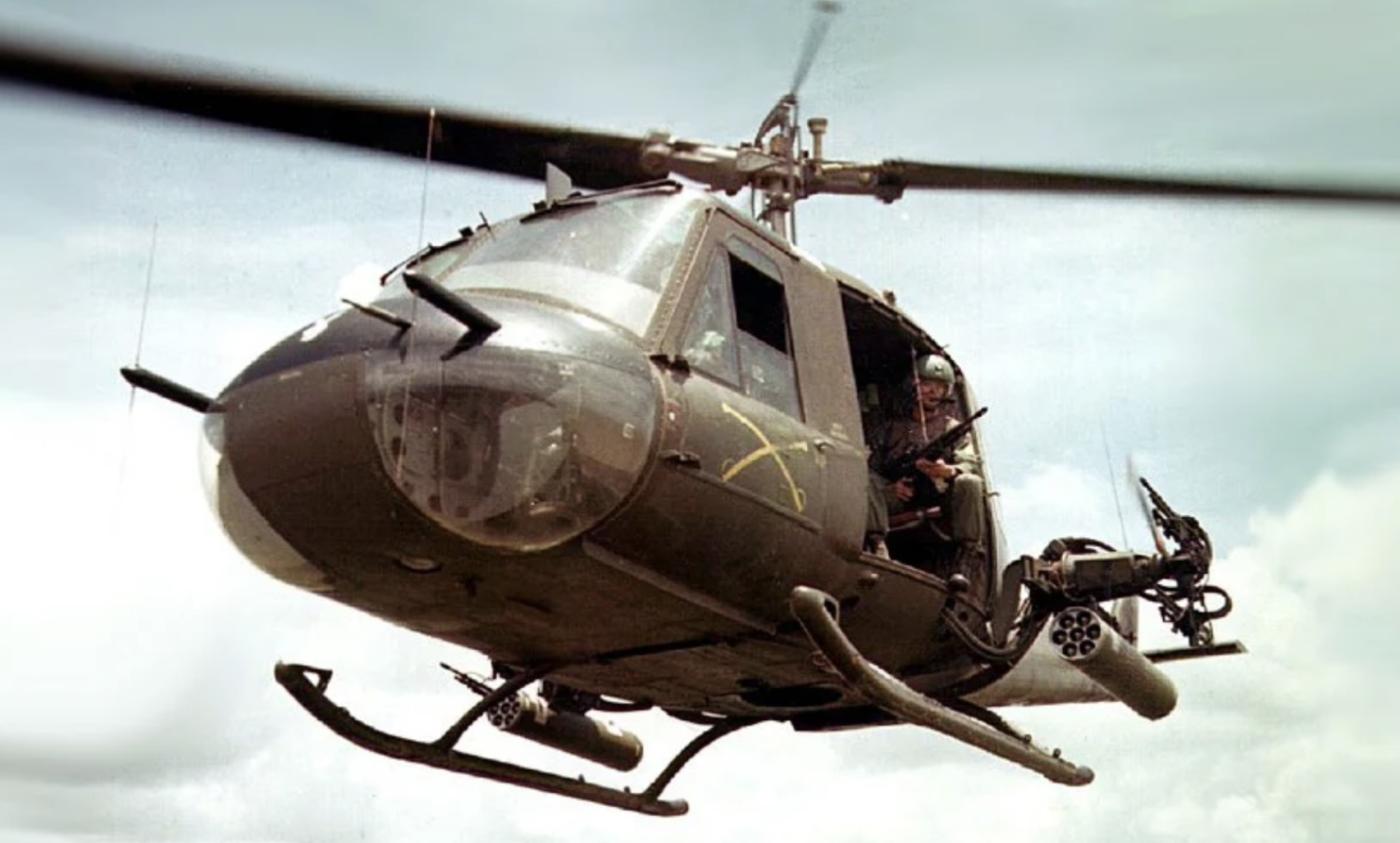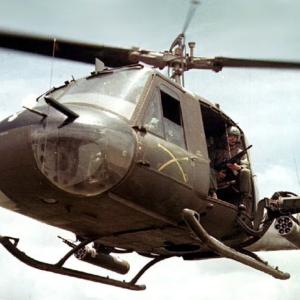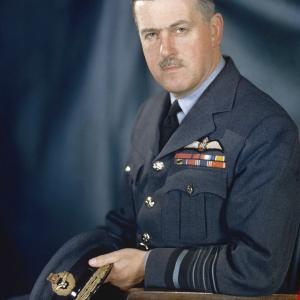
Huey Gun Ship
The Huey helicopter, officially designated the Bell UH-1 Iroquois, became one of the most iconic aircraft of the Vietnam War and remains one of the most recognizable helicopters ever built. Designed and manufactured by Bell Helicopter in the United States, the Huey was originally intended as a medical evacuation and utility aircraft, but it quickly proved to be far more versatile. Its development began in the mid-1950s with the first flight of the prototype in 1956, and by the early 1960s, it was entering full service with the U.S. Army.
During the Vietnam War, around seven thousand Hueys were used by American forces in a wide variety of roles. It was the first turbine-powered helicopter to serve with the U.S. military, offering improved reliability and performance over piston-engine models. Throughout its production run, which lasted until 1987, more than sixteen thousand Huey variants were built, including both American and licensed foreign versions.
The Huey was known for its adaptability. The standard crew for combat missions usually consisted of a pilot, co-pilot, crew chief, and one or two door gunners. In its troop transport configuration, it could carry between eleven and fourteen fully equipped soldiers, or six stretchers and a medical attendant for evacuation duties. With its large side doors and wide cabin, it could quickly load or offload men and supplies, making it the backbone of air mobility operations in Vietnam.
As the conflict intensified, the Huey was fitted with a range of weapon systems and became one of the first true “gunships.” These armed variants carried an array of machine guns and rocket launchers designed to provide covering fire for infantry or to escort transport helicopters. Door-mounted M60 machine guns were standard, each capable of firing up to around 650 rounds per minute. More heavily armed versions featured the M134 Minigun, an electrically driven six-barrel weapon capable of an extraordinary rate of fire of several thousand rounds per minute. In addition to guns, the Huey often carried 2.75-inch rocket pods, each holding between seven and nineteen rockets, which could deliver devastating bursts of firepower against enemy positions. These weapons allowed the Huey to support ground troops, suppress enemy fire, and attack small targets with remarkable speed and accuracy.
One of the Huey’s most critical roles in Vietnam was medical evacuation. Known affectionately as “Dustoff” missions, these flights often took place under heavy enemy fire, landing in small clearings or along riverbanks to pick up wounded soldiers. The helicopter’s ability to hover, land in confined areas, and quickly take off made it ideal for rescuing casualties who might otherwise not have survived. Thousands of lives were saved because of its presence on the battlefield.
In terms of performance, the UH-1H model, the most common version during the war, had a single turboshaft engine producing about 1,400 shaft horsepower. Its maximum speed was around 125 miles per hour, with a cruising speed of about 115. On internal fuel, it could stay airborne for roughly two and a half hours, giving it an operational range of about 315 miles depending on load and conditions. This endurance was sufficient for the short-range missions typically flown in Vietnam’s rugged terrain, and forward refueling points were often set up to keep operations continuous.
The Huey’s service in Vietnam was intense and costly. Thousands of aircraft were lost to combat and accidents, yet its durability and ease of maintenance meant that replacements were always in the air. The helicopter’s distinctive “whop-whop” of its two-bladed rotor became an unforgettable sound for those who served, a symbol of both fear and hope — the sound of reinforcements arriving or the lifeline of evacuation.
By the end of the war, the Huey had transformed military strategy. It revolutionized how armies moved, fought, and saved lives in modern warfare. Its design paved the way for the dedicated attack helicopter, including the Bell AH-1 Cobra, which shared much of its technology. Even decades after Vietnam, many Hueys continued to serve around the world in transport, firefighting, and humanitarian roles.










